Inclusive Education
Lecture 1: Notes
Lecture 1: Introduction to Inclusive Education
This lecture introduces you to the concept Inclusive Education.
Lecture Objectives
At the end of this lecture you should be able to
- Explain the concept inclusive education
- Describe educational placements for children with disabilities
- Differentiate special education from inclusive education
- Explain the concepts in inclusive education
Introduction
In this topic you will learn the terms used in inclusive education. The topic forms the basis of the course. The unit will cover aspects that include educational placements for persons with disabilities, from special education to inclusive education, inclusive education, special needs, and diversity. You will also be introduced to relations existing between special needs and disability and the terms used to describe individuals with different types of special needs.
Inclusion is a way of thinking and acting that allows every individual to feel accepted, valued, and safe. An inclusive community consciously evolves to meet the changing needs of its members. Through recognition and support, an inclusive community provides meaningful involvement and equal access to the benefits of citizenship.
In Inclusion, we embrace inclusion as a means of enhancing the well-being of every member of the community. By working together, we strengthen our capacity to provide the foundation for a richer future for all of us. The philosophy of inclusion goes beyond the idea of physical location and incorporates basic values and a belief system that promotes the participation, belonging and interaction
The Concept Inclusive Education
Inclusive education is a relatively controversial topic. To understand inclusive education, one has to first understand what inclusion is. The concept of inclusion was conceived in 1948 with the declaration adopted by the UN General Assembly on the “International Bill of Rights” which recognizes that all human beings are born free and equal in dignity and rights.
This declaration fundamentally seeks to deal with the issue of discrimination at all levels in every facet of society. Inclusion is therefore the acceptance of all people regardless of their differences.
Inclusion is about appreciating people for who they are and their competences, rather than how they walk, talk or even behave. Inclusion also allows people to value the differences in each other by appreciating that each person is unique in his/her own creativity. Theoretically, inclusion is the creation of an enabling environment that provides for the acceptance of children with and without disabilities to play and interact every day without any prejudices whatsoever, even if these children are receiving therapeutic services.
And for inclusion to succeed, it must be a passion that is shared by all the protagonists involved, including agencies, teachers, families, non-governmental organisations (NGOs), school administrators, local government officials and the whole community.
Inclusive education” or “inclusive learning” refers to the inclusion and teaching of ALL children in formal or non-formal learning environments without regard to gender, physical, intellectual, social, emotional, linguistic, cultural, religious, or other characteristics.
The term “learning environment” means any formal or non-formal setting where children gain knowledge and the skills to use that knowledge in their daily lives. Learning environments may take the form of schools and colleges or even cultural centres, hobby centres, or social clubs.
Education is the most effective way to break the cycle of discrimination and poverty that children with disabilities and their families often go through. Generally, it is about every child’s right to participate in education, and the school’s duty to accept him/her.
Inclusive education, therefore, is when children with disabilities are placed in the same classroom environment as other children of their age who do not have disabilities. Inclusive education focuses on enabling children with disabilities to attend school in their neighbourhood with the same children whom they play with.
This, it is believed, will enable these disabled children to make friends with their non-disabled counterparts and love school.
But the reality is that “inclusive education” involves modifications in philosophy, curriculum, teaching strategy, and structural organisation. Such modifications go beyond just affecting those students labelled as “disabled” and even far beyond of what is traditionally known as special education.
And each of these modifications has the potential to effect the necessary transformation and support needed by children with disabilities.
Hence, it is essential that societies adapt their structures to ensure that all children, irrespective of age, gender and/or disability, can enjoy their basic human rights without discrimination of any sort.
Research has proven beyond any reasonable doubt that it is possible to fully include children with disabilities in standard classrooms when the correct services and support-systems are provided.
Important support needed include creating Behaviour-Intervention Plans to address a child’s behaviour at any time if necessary. Also it is important to have a trained inclusion teacher who will make the necessary stimuli, to modify the curriculum in order to support children with cognitive and behavioural challenges in the general education classroom.
The idea behind inclusive education is that children with special needs will be placed in the same classroom environment as other children their age who do not have special needs. Inclusive education means that all students attend and are welcomed by their neighborhood schools in age-appropriate, regular classes and are supported to learn, contribute and participate in all aspects of the life of the school. Within inclusive education, there are two main branches of thinking: mainstreaming and full inclusion.
- Mainstreaming is a process that allows children with special needs to enter certain standard classrooms after they show the ability to keep up with the rest of their peers.
- Full inclusion puts children with special needs in standard classroom environments without testing or demonstration of skills. Individuals that support full inclusion believe that all children belong in the same classroom environment no matter what.
Inclusive education is about how we develop and design our schools, classrooms, programs and activities so that all students learn and participate together. Inclusive education is about making all students to be educated where they would be educated if they did not
have a disability (i.e., in age-appropriate general education classes in their neighborhood school) with necessary supports provided to students, educators, and families so that all can be successful.
Benefits of Inclusive Education
All children benefit from inclusive education. It allows them to:
Develop individual strengths and talents, with high and appropriate expectations for each child.
- Work on individual goals while participating in the life of the classroom with other students their own age.
- Involve their parents in their education and in the activities of their local schools.
- Foster a school culture of respect and belonging. Inclusive education provides opportunities to learn about and accept individual differences, lessening the impact of harassment and bullying.
- Develop friendships with a wide variety of other children, each with their own individual needs and abilities. On the interpersonal level, inclusive education allows children to develop friendships with their peers and feel less bothered about their disabilities; making them show higher confidence levels than those who are isolated to different classrooms because of their disabilities.
- Inclusion furthermore brings about a blend of various skills and characteristics which are exploited by these children as they grow up together. For instance, the braille and sign language eventually become other mediums of communication for all the children, and the non-disabled children voluntarily assist their wheelchair colleagues with mobility.
- Positively affect both their school and community to appreciate diversity and inclusion on a broader level.
- There is effectively break of the barriers of communication and accessibility, and also enhance group studies which insure to their collective benefits.
- They would also have a heightened sensitivity towards the challenges that others face, show increased empathy and improved leadership skills; necessary for national cohesion and “mutually-inclusive” development. Inclusion respects diversity and honours differences.
Educational placements for children with disabilities
Educational placement is all about special education. Special education refers to services that are used to meet the learning needs of students with disabilities. Placement refers to the amount of time in each school day that a student spends in the resource or in a general education classroom.
The school district is required to have a range of placements where your child can be taught, including in the general education classroom.
A student could be placed in a single setting all day or spend parts of the day in different settings. For example, a student in a mainstream education classroom all day might receive special education services in
the same general education classroom as part of regularly scheduled instruction time. Or, a student might go to different educational settings for part – or all – of the day to receive special education services.
Here are some educational settings your child could have:
Mainstream (many people refer to this as General Education): Many students receive special education and related services in a general education classroom where peers without disabilities also spend their days. This is called inclusion. Some services that a student might receive in a mainstream setting include: direct instruction, a helping teacher, team teaching, co-teaching, an interpreter, education aides, modifications or accommodations in lessons or instruction, or more teachers per student.
- Resource: This is a class for students who receive special education services and need intensive help to keep up with grade-level work. The class may have 1 or 2 students, or may have many students. However, students receive instruction or support based on their unique needs. The number of minutes your child spends in a resource class must be written into the IEP.
- Self-Contained Programs or separate Class: This is a general term for placements for which the student needs to receive services outside of the general education classroom for half of the school day or more. Placement in a self-contained classroom has to be based on a student’s unique needs, not on the disability alone.
- Regular class includes students who receive the majority of their education program in a regular classroom and receive special education and related services outside the regular classroom for less than 21 percent of the school day.
- Special School or Separate school includes students who receive special education and related services in a public or private separate day school for students with disabilities for more than 50 percent of the school day.
- Residential facility includes students who receive special education in a public or private residential facility.
- Homebound/hospital environment includes students placed in and receiving special education in a hospital or homebound program.
Within inclusive education there are programs that often have specialized settings including:
- Preschool Program for Children with Disabilities (PPCD): This is a set of special education services for children age 3 to 5. PPCD services can take place in different settings, including a child development center, a special class in a school, a private preschool, or right on an elementary school campus. Any PPCD placement can include related services like Speech therapy, Occupational therapy, In-home training for parents, Counseling for children and parents, health services, Social work services and transport services (training children to manage movement from home to school and manage themselves when walking)
- Life Skills: This helps students with many different types of disabilities but generally those who need support with academic, social, or behavioral issues as well as daily living skills. Students who receive services in this program may stay until they are old enough to take their roles.
- Social Behavior Skills (SBS): It is also called Applied Behavior Skills or just Behavior Skills. In this program, trained teachers help students learn decision-making and social skills (to promote self-responsibility) with other peers around. SBS is a separate classroom that children can stay in full-time or part-time, depending on their IEP.
- Transition or 18+: A small number of students may stay enrolled in special education services until they turn old 21 or 22 years old. Some may stay enrolled for so long as they are developing skills necessary to manage their life. Most of these programs are designed to help the student build more independence and get ready to go out into the workforce. Students might stay in the classroom for some of the day and go to job training for the rest of the day.
Concepts related to inclusive education
Special Educational Need
Special educational needs are defined as a restriction in the capacity of the person to participate in and benefit from education on account of an enduring physical, sensory, mental health or learning disability, or any other condition which results in a person learning differently from a person without that condition. This definition recognises that special educational needs may arise from four different areas of disability:
physical, sensory, mental health, learning disability, or from any other condition that results in the child learning differently from a child without that condition. It is also important to understand that a child can have a disability but not have any special educational needs arising from that disability which require additional supports in school.
Children with special needs
Special educational needs and disabilities (SEND) can affect a child or young person’s ability to learn. They can affect their:
- behaviour or ability to socialise, for example they struggle to make friends
- reading and writing, for example because they have dyslexia
- ability to understand things
- concentration levels, for example because they have ADHD
- physical ability
Mainstreaming
A mainstream class in a mainstream primary or post-primary school is where the class or subject teacher has primary responsibility for the progress of all pupils in the class, including pupils with special educational needs. Additional teaching support from a learning support or resource teacher may be provided, where appropriate.
Integration
This is generally linked to preparing pupils for placement in ordinary schools. It carries with it an idea that learners need to be educationally and/or socially ‘ready’ for transfer from special to ordinary school. The expectation is that learners will adapt to the school rather than the school changing to accommodate the learner and meet a wider range of diverse needs.
Marginalisation
Barely provided for or able to access services or participate in society. Generally understood as a social process by which vulnerable groups are moved out of the mainstream to a powerless position in society.
Social inclusion
Social inclusion is a process which ensures that those at risk of poverty and social exclusion gain the opportunities and resources necessary to participate fully in economic, social and cultural life and to enjoy a standard of living and well-being that is considered normal in the society in which they live.
It ensures that they have greater participation in decision-making which affects their lives and access to their fundamental rights (as defined in the Charter of the Fundamental Rights of the European Union.)
Inclusion
Inclusion can be seen as a process of addressing and responding to the diversity of needs of all children, youth and adults through increasing participation in learning, cultures and communities, and reducing and eliminating exclusion within and from education. It involves changes and modifications in content, approaches, structures and strategies, with a common vision that covers all children of the appropriate age range and a conviction that it is the responsibility of the regular system to educate all children (UNESCO, 2009).
It implies a radical reform of the school in terms of educational policy and curricular frameworks, which includes educational content, assessment, pedagogy, the systemic grouping of pupils within institutional and curricular structures.
It is based on a values system that welcomes and celebrates diversity arising from gender, nationality, race, language, social background, level of educational achievement, disability, etc. Inclusion also implies that all teachers are responsible for the education of all learners.
Inclusive education
UNESCO (2009) give the following definition: ‘Inclusive education is a process of strengthening the capacity of the education system to reach out to all learners … As an overall principle, it should guide all education policies and practices, starting from the fact that education is a basic human right and the foundation for a more just and equal society’.
Diversity
A multi-faceted concept that can contain many elements and levels of distinction, e.g. age, ethnicity, class, gender, physical abilities, race, sexual orientation, religious status, educational background, geographical location,
income, marital status, parental status and work experiences. OECD (2010) define diversity as: ‘ characteristics that can affect the specific ways in which developmental potential and learning are realised, including cultural, linguistic, ethnic, religious and socio-economic differences. ’
Equity
Equity in education has two dimensions that are inter-linked:
- Fairness – making sure that personal and social circumstances, for example gender, socio-economic status or ethnic origin, do not present an obstacle to achieving educational potential. This aims to minimise divergence across social groups by bringing the achievements of the less advantaged to the same level as those of the more advantaged groups and ensure a basic common standard of education for all learners.
- Inclusion – meeting the needs of all individuals through differential treatment in order to take student diversity into account (Ainscow et al., 2006).
Impairment:
Impairment is any loss or abnormality of psychological, physiological or anatomical structure or function. Impairment refers to a problem with a structure or organ of the body.
The inability to move the legs easily at the joints and inability to bear weight on the feet is impairment. Without orthotics and surgery to release abnormally contracted muscles, ones level of impairment may increase as imbalanced muscle contraction over a period of time can cause hip dislocation and deformed bone growth. No treatment may be currently available to lessen ones impairment.
Disability:
Disability is any restriction or lack (resulting from an impairment) of ability to perform an activity in the manner or within the range considered normal for a human being. disability is a functional limitation with regard to a particular activity.
The inability to walk is a disability. The level of disability can be improved with physical therapy and special equipment. For example, if learns to use a walker, with braces, level of disability will improve considerably.
Handicap:
Handicap is a disadvantage for a given individual that limits or prevents the fulfillment of a role that is normal. Handicap refers to a disadvantage in filling a role in life relative to a peer group. If one has cerebral palsy, then cerebral palsy is handicapping to the extent that it prevents him from fulfilling a normal role at home, in preschool, and in the community.
The level of handicap can be only very mild in the early years as if one has been well-supported to be able to play with other children, interact normally with family members and participate fully in family and community activities.
As one gets older, his handicap will increase where certain sports and physical activities are considered “normal” activities for children of the same age. Appropriate services and equipment can reduce the extent to which cerebral palsy prevents one from fulfilling a normal role in the home, school and community as grows.
Cultural competence
Educators with the skills, knowledge, and attitudes to value the diversity among students will contribute to an educational system designed to serve all students well. Cultural competence is a key factor in enabling educators to be effective with students from cultures other than their own.
Cultural competence is having an awareness of one’s own cultural identity and views about difference, and the ability to learn and build on the varying cultural and community norms of students and their families.
It is the ability to understand the within-group differences that make each student unique, while celebrating the between-group variations that make our country a tapestry.
This understanding informs and expands teaching practices in the culturally competent educator’s classroom.
Cultural competence is defined as a set of congruent behaviors, attitudes, and policies that come together in a system, agency, or among professionals and enables that system, agency, or those professionals to work effectively in
cross–cultural situations. Operationally defined, cultural competence is the integration and transformation of knowledge about individuals and groups of people into specific standards, policies, practices, and attitudes used in appropriate cultural settings to increase the quality of services; thereby producing better outcomes.
There are five essential elements that contribute to a system’s ability to become more culturally competent. The system should (1) value diversity,
(2) have the capacity for cultural self–assessment,
(3) be conscious of the “dynamics” inherent when cultures interact,
(4) institutionalize cultural knowledge, and
(5) develop adaptations to service delivery reflecting an understanding of diversity between and within cultures.
Further, these five elements must be manifested in every level of the service delivery system. They should be reflected in attitudes, structures, policies, and services.
Paraprofessionals
Paraprofessional educators generally assist teachers in the classroom, supervise students outside of the classroom, or provide administrative support for teaching. Their duties range from filling teaching positions to supplementing regular classroom curriculum with additional enrichment activities for students. Other positions include classroom aides, special education aides, school library technical assistants, and tutors.
Some paraprofessionals work directly with students, in which case they may listen to students practice reading aloud, help students understand and complete their assignments, or assist students with special needs.
Many paraprofessionals are assigned to supervise groups of students who are eating, playing outside, or on field trips.
They may be assigned to perform clerical work for a teacher, in which case they may grade assignments, type up records for attendance or grades, set up equipment, and help prepare materials for instruction, e.g., by making photocopies of worksheets. Many teacher assistants work primarily or exclusively with students who have special educational needs.
Their duties vary according to the needs of the student, and may include physical care for students who are unable to care for themselves (such as feeding, lifting, moving, or cleaning), behavioral management, or academic assistance.
Paraprofessionals can work in other programs that the school provide, such as school aged childcare and recess/ lunch duties. This links the paraprofessional to the students, but not the teacher or schools itself. In some cases paraprofessionals are teaching lessons, working with small groups for remediation, leading extracurricular clubs/sports and are no longer simply the “teacher’s aide” of the past.

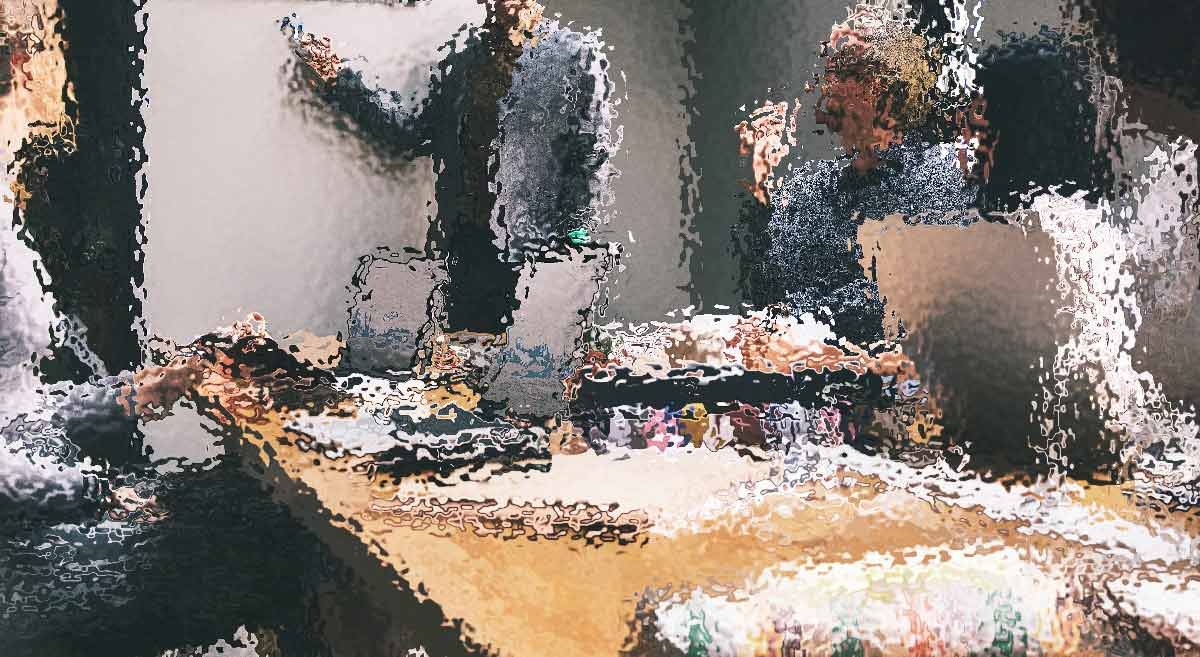
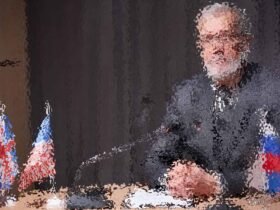

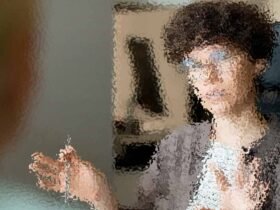






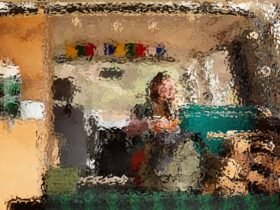




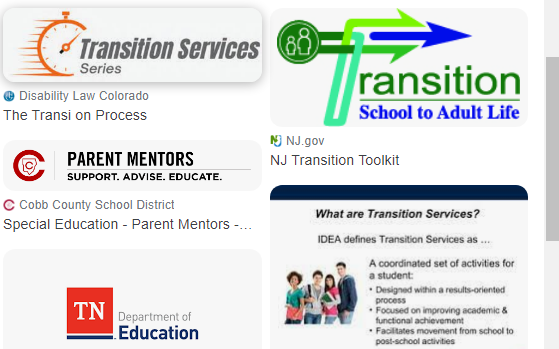
Leave a Reply